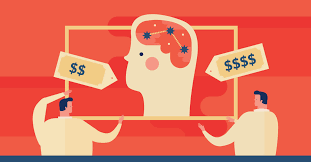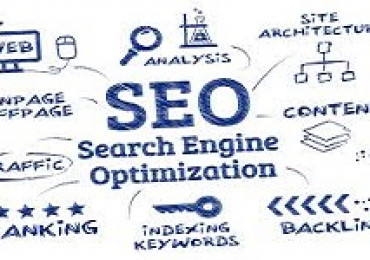
Marketing plays an important role in psychology by exploiting a deep understanding of human behaviors and emotions to motivate customers to make purchasing decisions. Marketing overlaps with psychology in several aspects:
- The idea: Marketing targets the psychological motives that drive individuals, such as the need for belonging, security, or self-esteem.
- Psychological exploitation: Companies use their advertisements to link their products to these motives. For example, luxury clothing brands exploit the human desire to feel special or elegant.
Example: Nike campaigns that encourage personal achievement and individual excellence through slogans such as "Just Do It", play on people's desire for self-realization and excellence.
2. Using emotions
- The idea: Emotional marketing relies on evoking certain feelings in the audience such as happiness, sadness, or guilt to push them towards making certain decisions.
- Psychological exploitation: Emotions play a major role in purchasing decisions, so campaigns rely on images and scenes that stir emotions. Advertisements that evoke nostalgia or joy can strengthen brand associations.
Example: Advertisements that talk about family and security, such as Coca-Cola’s ads that show warm family scenes during the holidays.
3. Framing Theory
- Idea: Marketing presents information in a way that influences how consumers interpret it. Changing the way a product is presented can influence how consumers make a decision.
- Psychological Exploitation: For example, presenting a product as “90% fat-free” makes consumers feel it’s a healthier option, rather than saying it has “10% fat.”
4. Scarcity Theory
- Idea: Humans tend to place a higher value on things that seem scarce or limited.
- Psychological Exploitation: Marketing exploits this tendency by using phrases such as “limited supply” or “few pieces left” to prompt consumers to buy faster for fear of missing out.
Example: “Last hour” or “limited quantity” offers from platforms like Amazon and Booking.com push customers to make quick decisions.
5. Social Influence
- Idea: People tend to act based on the behaviors and opinions of others. If they see others buying a product or using a service, they are more likely to imitate them.
- Psychological Exploitation: Brands use customer ratings, star reviews, and influencer recommendations to show that a product is trustworthy and popular.
Example: Airbnb ads are based on real-life stories and experiences from users to boost trust in a service.
6. Cognitive Dissonance Theory
- Idea: Cognitive dissonance occurs when an individual feels an imbalance between what they know and what they do, leading them to adjust their thoughts or behaviors to resolve this dissonance.
- Psychological Exploitation: Marketing can push consumers to justify irrational purchasing decisions by offering benefits or advantages that make them feel good after the purchase.
Example: Car campaigns that promote the environmental benefits of luxury cars make consumers who want luxury and a sense of environmental responsibility feel better about their decision.
7. Neuromarketing
- The idea: Neuromarketing studies how the brain responds to advertising stimuli through techniques such as brain scanning or eye tracking.
- Psychological exploitation: Using neuromarketing, companies can learn how consumers react to product designs or advertisements and use this information to improve their marketing campaigns.
Example: Companies like Pepsi and Coca-Cola use neuromarketing to understand how their advertisements affect consumers’ neural emotions.
8. Colors and Brand Design
- The idea: Colors play an important role in influencing mood and behavior.
- Psychological exploitation: Companies choose colors based on the emotional impact they want. For example, blue inspires trust, red attracts attention, and green is associated with the environment and health.
Example: Starbucks uses the color green in its logo to associate the brand with comfort and relaxation.
9. Reward Waving Strategies
- Idea: People respond positively to rewards and incentives, such as points or discounts.
- Psychological Exploitation: Reward systems encourage customers to repeat purchases and maintain loyalty to the brand.
Example: Loyalty programs such as “Starbucks Rewards” that award points for every purchase, which enhances loyalty and increases the likelihood of a return purchase.

13/09/2024

30/08/2024

26/08/2024

11/09/2024

14/06/2024

11/09/2024

30/08/2024

01/10/2024

05/09/2024

11/09/2024

23/08/2024

01/09/2024

18/08/2024

16/08/2024

26/08/2024